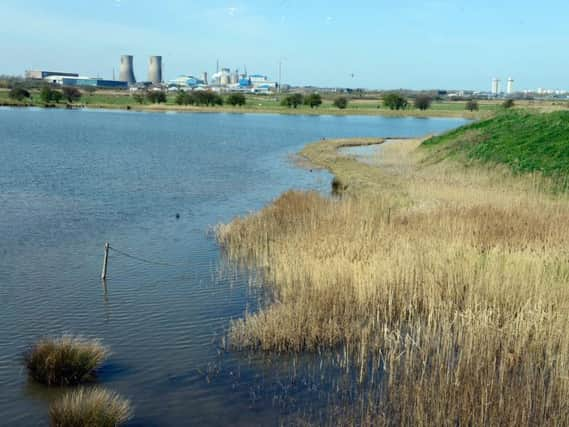Future of nature reserve on outskirts of Hartlepool to go under spotlight


Parts of the Seal Sands area are being proposed for "de-notification" as they are now not considered to be of special interest.
Natural England is celebrating the decades of work by industry and nature conservation to restore the wildlife of the Tees Estuary by extending the Sites of Special Scientific Interest (SSSI) in the area.
Advertisement
Hide AdAdvertisement
Hide AdAt the same time the organisation says it is consulting, on the Government’s behalf, on proposals to extend the existing Special Protection Area (SPA) and Ramsar site, to ensure that wildlife has a secure future and strengthen the ‘blue belt’ of marine protected areas around England.
The Tees Estuary is a unique ‘eco-industrial’ environment where ports and chemical facilities coexist with areas of high conservation value, including mudflats, saltmarsh, grasslands, lagoons and sand-dunes which teem with wildlife.
Extending the designated sites, Natural England argues, will recognise the conservation achievements of its partners, from management of industrial premises to attract breeding avocet, the creation of a popular nature reserve at Saltholme, and the return of breeding harbour seal to the estuary following major investments in improving water quality.
The extended SPA and Ramsar site, Natural England argues, will protect important areas of sea and estuary used by internationally-important populations of breeding little tern and common tern, and additional areas of mudflat, saltmarsh, grassland and lagoons used by breeding avocet, migrating ruff and sandwich terns, and over 25,000 wintering waterbirds, including important populations of redshank and knot.
Advertisement
Hide AdAdvertisement
Hide AdThere were previously seven SSSIs in and around the Tees Estuary, which have now been merged into a single, landscape-scale SSSI, totalling around 12 square miles.
Additional areas of sand-dune, saltmarsh, mudflat, grassland, lagoons and estuarial waters will be protected, along with the populations of breeding and wintering birds, harbour seal and invertebrates.
The extended SSSI continues to protect two areas of nationally-important geology, notably the mysterious ‘submerged forest’ at Hartlepool.
Bosses added that the designation will ensure that local communities continue to have the "amazing" natural resource available as part of their daily lives.
Advertisement
Hide AdAdvertisement
Hide AdBrad Tooze, Natural England’s area manager for Northumbria said: “This is the culmination of many years work by a wide range of partners to protect and create habitat to deliver one of England’s most unique places for wildlife.
"The Tees Estuary demonstrates how sustainable development can proceed hand-in-hand with environmental enhancement, exemplified by the return of harbour seal to the estuary in the 1980s, and the colonisation by avocet in the 21st Century.
"These designations, together with the new ways of working enshrined in the Tees Estuary Partnership, will help secure the future of this world-class landscape for nature, and the newly-opened stretch of the England Coast Path will showcase the area’s wildlife - and the tireless work of site managers to look after it - to local people and visitors from further afield.”